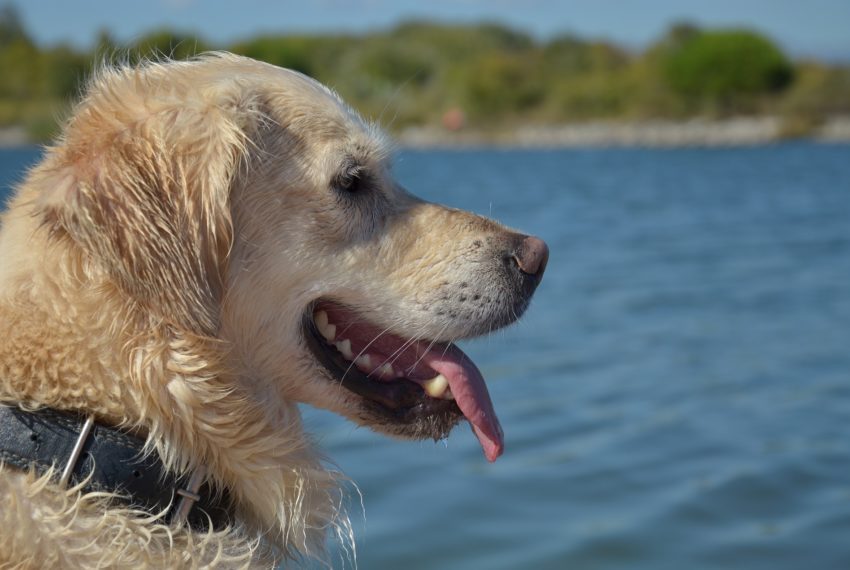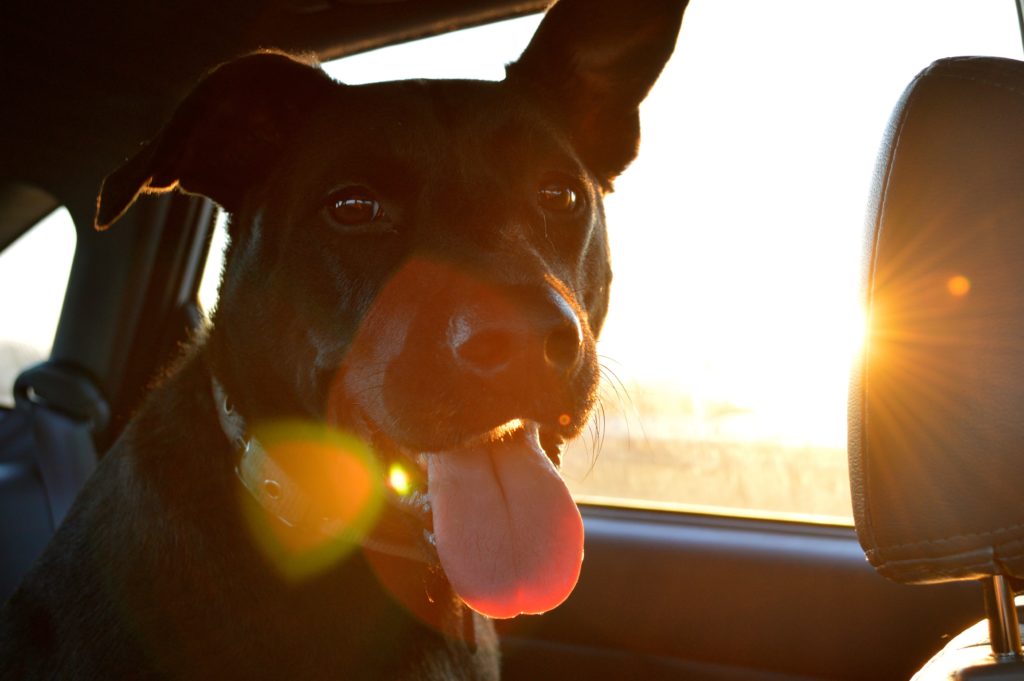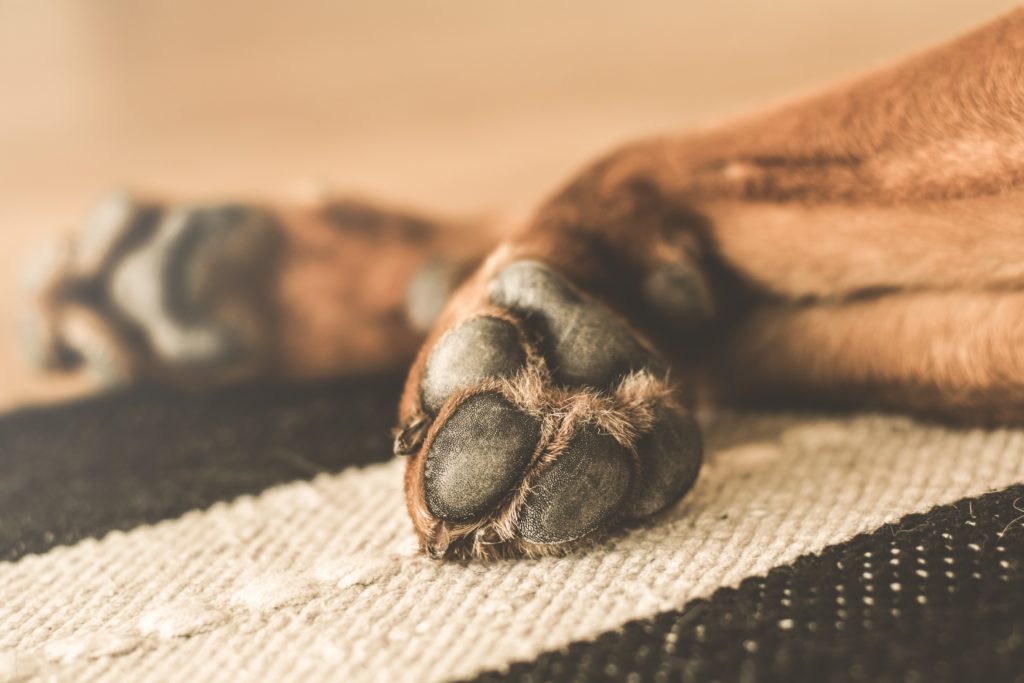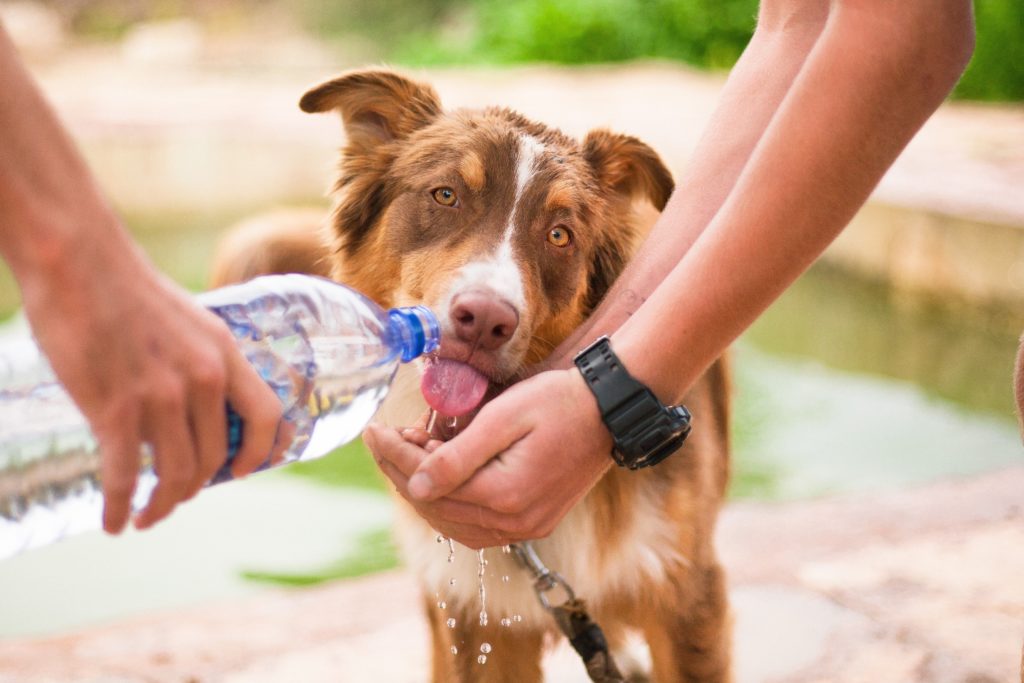
15 tips for travelling with your dog
If you’re traveling with fury cargo onboard, the trip becomes a lot more complex – but this doesn’t need to be off putting. It simply means you’ve got to be a little more organised so that your entire holiday isn’t overshadowed by dehydrated Dachshunds or bored beagles.
Here are 15 travel tips covering forward-planning, car journeys, when you arrive & holiday hacks that will ensure the whole family has the jolly holly they deserve.
You can use these quick-links to jump to the detailed information for each travel tip.
Forward-planning
Some things require on-site handling, but there’s plenty to do prior to your trip to give future-you an easier time:
ID your dog
This is not simply to reduce hassle and stress if your dog goes for a walk (and forgets to tell you). It is a legal requirement for dogs who are outside of a private property to be properly tagged – though to be extra certain, microchips are the way to go. That said, a clearly labelled collar doesn’t become obsolete once they’re chipped – realistically, your average civilian is more likely to take action if they come across a dog with an easy-to-access address on its collar.
Research accommodation
Simply crossing your paws that your booked accommodation will be suitable for pets is not enough. This goes slightly further than whether the place simply “allows” pets, and more about whether it is right for your breed’s needs. Unfortunately, no matter how animal-loving the landlords are, a second-floor flat is never going to be ideal for dogs. Other animal-related questions it is worth sourcing answers for are whether there’s a limit (in case you’re bringing the whole mutt-ley crew), whether there is an accessible garden or outdoor area, and even dimensions if you know your dog is bigger than most.
Packing
The moment you’ve decided you’re taking your dog travelling with you, make a list of everything they need in the average day – and then make sure every one of those things comes with you (with a few extra, just in case). With humans, the mantra “wallet, passport, phone” ensures that you at least have the bare essentials and can buy more if you’ve forgotten something. When travelling with dogs, it’s not quite as simple – your average countryside convenience store may be somewhat lacking in the leash department.
So, make sure you pack these key items: a water bowl (ideally one which you can take everywhere with you, so that all you need are plumbing facilities to quench your excited companion). Your dog’s regulars – this includes everything from their medication and food, to their beds and blankets, or toys which they refuse to sleep without. Pack everything you’d need for a walk – poop bags (it’s really not worth running out, pack as many as is reasonable), a towel, a strong leash. On top of these, it’s worth taking more administrative items too, like medical records (as up-to-date as possible before big trips), vaccination certificates, and a recent photo of your dog for the worst case scenario.
This said, it may not be feasible to take all the food they’ll need if you’re going for a substantial amount of time. There are a few things to do in this case. You could phone up local stores and see whether they stock the brand you usually use. Or, if they don’t and you know your fussy friend isn’t going to try something new, you could book to have your usual brand delivered to your holiday accommodation when you’re there – a little more intricate when it comes to planning but saves you carting bags and bags of food across the country in your already-overpacked car.
Research the local area
While you want to avoid needing to find things while on holiday, it’s still helpful to know in advance where you’ll need to go if it comes to it. Making up a little contact list of local vets and pet shops will make life a lot easier if it’s needed. It might also be helpful to draw up a list of local dog-friendly attractions, restaurants and walks, so that you are never turned away or disappointed.
Car journeys

A lot of dog-rearing is intuitive: if they get a good walk, they’re more likely to sleep at night. If they’re easily over-excited by squirrels, cows, and even children, keep them on a shorter lead when walking in unknown terrain. The list can go on. But some things are less instinctive, like the intricacies of car rides (especially if it’s their first time). It’s not quite so simple as strapping them in.
Motion sickness
Without getting too crude with the details, nobody wants a dog with motion sickness or an upset tummy. The best way to avoid this is not to feed your dog just before you leave, but can also be remedied with medication that can be prescribed by your family vet. In fact, your driving time should be picked quite specifically with your dog’s schedule – while a crack of dawn set-off may seem like a great way to skip the traffic, waking a dog early and then not feeding them is not ideal. Most dogs get used to driving pretty quickly, so try avoid their first trip being a long-haul one. Take them to the park or on day-trips in the car while at home so they get used to it.
Keep them hydrated
Cars can be quite stuffy, so it’s important to keep your dog well-watered. Keep their bowl in the car and a water bottle to top it up. This is where it becomes important that you aren’t travelling in a car alone with your dog (though if this is unavoidable, it can be worked around). If you are travelling with a two-legged companion, one of you can focus unequivocally on the road, while the other ensures your pet is okay. Part of hydration is linked to temperature, so depending on where you are and the internal temperature of the car, make sure you’ve considered the implications for your dog – whether it’s investing in a window shade if the sun is blaring, or in a fluffy blanket if it’s a bit chilly.
Stop often
This is kind of a given if you take point two seriously – not only will your dogs need regular toilet breaks, but it’s also important for them to get fresh air and walk around a bit as often as possible. These are also opportunities for you to top up your water bottle so that you don’t have to keep gallons of it at your feet. Remember, when stopping, to let your dog out of the car and have someone you trust keeping an eye on them. Even if you think cracking a window will do, don’t underestimate how easy it is to get caught in a bathroom line or distracted in a shop – hot cars are very dangerous for dogs.
Restrain your dog
Nobody likes to see their pooches cramped in a crate, but it’s undeniably the safest way to travel. Not to mention, it’s a legal requirement in most countries’ highway codes. Under no circumstances should your dog be 100% mobile – jumping across laps or sniffing around is not on. The crate should be strapped in safely with a seat belt in one of the back seats, as the front seat could lead to air-bag induced injuries. This isn’t just for your dog’s safety but also everyone in the car – a distracted driver is a big no no. Though there’s no denying the heart-melting-appeal of dogs with their heads out the window, ears and tongues flapping in the breeze – but this will have to be saved for the cartoons, because it’s an injury waiting to happen. Remember: this won’t be the ideal set-up for your pooch, so be mindful of their comfort and do what you can to maintain it.
When you arrive

This is the fun bit! You’ve arrived, you have an exciting holiday planned, filled with walks, swims, and delicious meals. But the admin isn’t done quite yet. If you’ve done the pre-trip planning right, this part should be relatively painless. On arrival, you will need to:
Walk the property and perimeter
Once you’ve dumped your bags and collected keys – all the human tasks, really – it’s time to inspect the property. You’re basically just checking that there’s not a broken/open gate calling your dog’s name for a wander. Perhaps the neighbours have a beautiful rose bush which it would be an awful shame to see destroyed? Check it all out and then act accordingly – shut doors which lead to the outside.
Set up their bed straight away
You might be tempted to head straight to the beach, or the local pub, but setting up your dog’s home-from-home straight away is a good rule of thumb. Not only does it mean you won’t have to do it after a long day exploring or a lengthy dinner, but it gives your dog a chance to acclimatize to its usual bed being in an unknown environment before it’s bedtime. There could be a fair bit of sniffing required before they’re confident this suspicious occurrence is okay for sleeping.
Stick to routine
Dogs are creatures of habit, so if they always eat, take pills or walk at the same time, it can be to everyone’s advantage to keep it that way. Though it’s important to keep them in your control in new environments or while exploring the nearby area, it’s also important to let them do a thorough investigation (which usually involves a fair bit of sniffing and territory-marking). The fact of the matter is that their routines will be shaken up a bit, so try and maintain some structure where you can.
Be alert
While you ought to stick to routine where you can, this is not completely possible when you’re in a new place – no matter how much prior research you’ve done of the local area, if it’s new to you too, there will always be surprises. When out on walks or exploring nearby, be alert. Look out for packs of deer that might entice some hunter-instincts, or of cliff-edges which should be admired from a safe distance. The only way to be completely safe with this is to have a sturdy lead and collar – and if you’re in particularly misty areas (ie. a large part of the UK’s countryside), or are walking at night, an LED lead may be a worthy investment. Dogs love a good swim, but this is another time to be alert – especially if they’re splashing in the often unpredictable waves rather than a lake, like they’re used to. Look out for signs – some places don’t permit swimming.
Some final holiday hacks

This travel guide should provide you with enough information to ensure your holiday runs smoothly and encourage you to always take your dogs with you when you travel – they so prefer it to kennels or dog-sitters! Some final things to remember, which don’t always spring to mind immediately but are no less important:
Dogs lap up anything
Dogs haven’t quite mastered differentiating salty sea water and fresh drinking water – you’ll have picked that up from their toilet-drinking habits, too. So keep an eye on them and make sure you’ve always got water at hand so they aren’t tempted to lap up the ocean. Make sure you also hose them down after they’ve swum in the sea so they’re not licking salt and sand from their fur. Eating sand can also have a range of negative effects on their digestive system, so be wary of this when throwing things which they will fetch and inevitably pick up some sand while they’re at it.
Dogs sunburn
While a doggy-fedora and sunglasses make for the perfect imagery, it’s not quite so kitsch as that. You get sun cream especially for pets (don’t use your own) – it’s a valuable purchase, especially for light skin and short haired dogs.
Dogs like to dig
It’s true – just as your newly planted herb garden which you turned away from for two minutes! This is no problem on the beach, in fact the beach is a prime digging area and easy on the paws. However, beaches are unfortunately not quite as natural as we’d like from an ideal ecological world, and there are sometimes sharp and nasty items buried beneath the surface. Be mindful, but don’t worry too much – just keep an eye on them.
